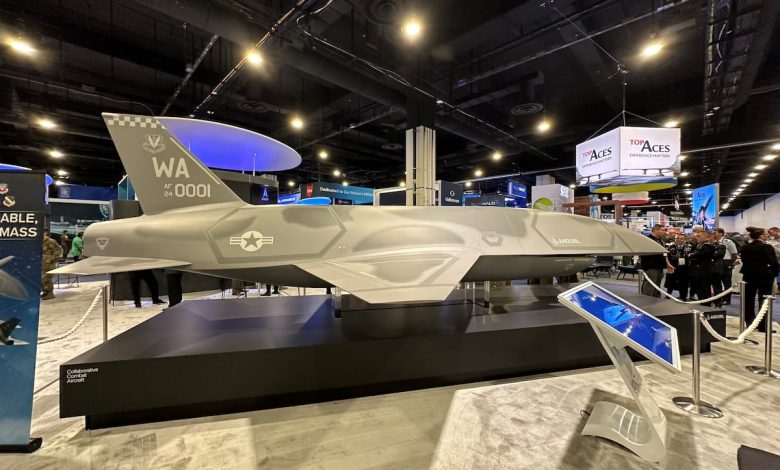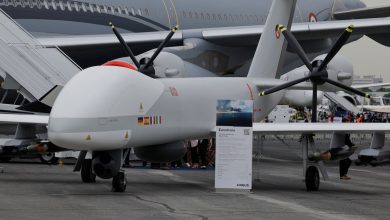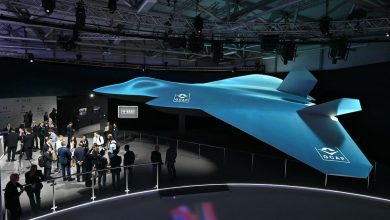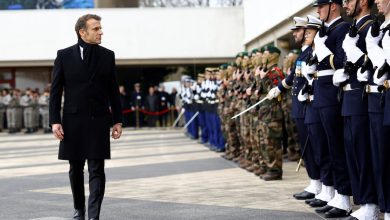Air Force buying more drone wingmen to develop operational tactics

The Air Force is buying more drone wingmen known as collaborative combat aircraft to experiment with, the service’s acquisition chief said Wednesday.
Andrew Hunter, the assistant secretary of the Air Force for acquisition, technology and logistics, said at Defense One’s State of Defense Business forum that he recently approved the purchase of more CCAs for the service’s experimental operations unit.
That unit, which the Air Force is now standing up, is in charge of developing tactics and procedures for how CCAs would be used in a real-world operational scenario.
CCAs are autonomous drones intended to fly alongside F-35 Joint Strike Fighters and the future Next Generation Air Dominance fighter, and perform missions for them such as striking enemy targets, conducting surveillance, or jamming enemy signals. Air Force Secretary Frank Kendall wants CCAs to cost a “fraction” of an F-35, which can run from $80 million to $100 million.
The Air Force in April awarded contracts to General Atomics and Anduril Industries to keep designing, building and testing their own versions of the first batch of CCAs, and subsequent, more advanced iterations of CCAs are planned to follow.
But before CCAs can fully be integrated into squadrons, the Air Force has to develop concepts of operations for them, or exactly how they would be controlled and operate in battle. The experimental operations unit is working with Australia’s military — which has been working on a similar program with Boeing’s Ghost Bat for several years — and other international partners, Hunter said.
As the experimental operations unit sets those tactics, Hunter said, it’s important to have actual CCAs to experiment with.
The Air Force will be buying both Anduril’s Fury and General Atomics’ Gambit CCAs for the experimental operations unit, Hunter said, though he could not say how many or when they might arrive.
The Air Force is trying to move quickly on the CCA program, Hunter said, and thinking early in the process about how they will be manufactured and how to keep future sustainment costs down.
Part of that includes reconsidering how it needs to go about evaluating a CCA’s airworthiness, Hunter said, since they’re designed to be affordable and won’t have pilots that need protecting. The same engineering work will apply, he said, but CCAs will not always have to meet the higher standards other aircraft have met.
“We think about airworthiness differently,” Hunter said. “With prior uncrewed aircraft that we’ve procured, we’ve kind of done airworthiness largely the old way, and we really need to do it in a fundamentally new way.”
An Air Force Materiel Command official also said at another event Wednesday, this one hosted by the Mitchell Institute for Aerospace Studies, that both General Atomics’ and Anduril’s CCAs have passed a key design review. Air and Space Forces Magazine reported that Col. Timothy Helfrich, AFMC’s senior materiel leader for advanced aircraft, told reporters that the critical design review was successfully completed in early November, which could allow CCAs to enter a more advanced production phase.
Flight tests of CCAs are planned for 2025, Hunter said, and will be key to show whether can carry out their promised tasks at a relatively affordable price.
That will be a key step to figuring out which of the first two CCAs the Air Force wants to officially add to its fleet, Hunter said. But how each company approaches production is also important, he said — and both could still be in the running.
“You learn a lot when you get into flight test,” Hunter said. “But … it’s [also] the approach to production, the people demonstrating they can scale to the rates that we envision for this platform, and that are necessary for it to be affordable mass. I think both vendors have an opportunity to succeed, and it’s entirely conceivable that we could move forward with both.”
Stephen Losey is the air warfare reporter for Defense News. He previously covered leadership and personnel issues at Air Force Times, and the Pentagon, special operations and air warfare at Military.com. He has traveled to the Middle East to cover U.S. Air Force operations.
Read the full article here






